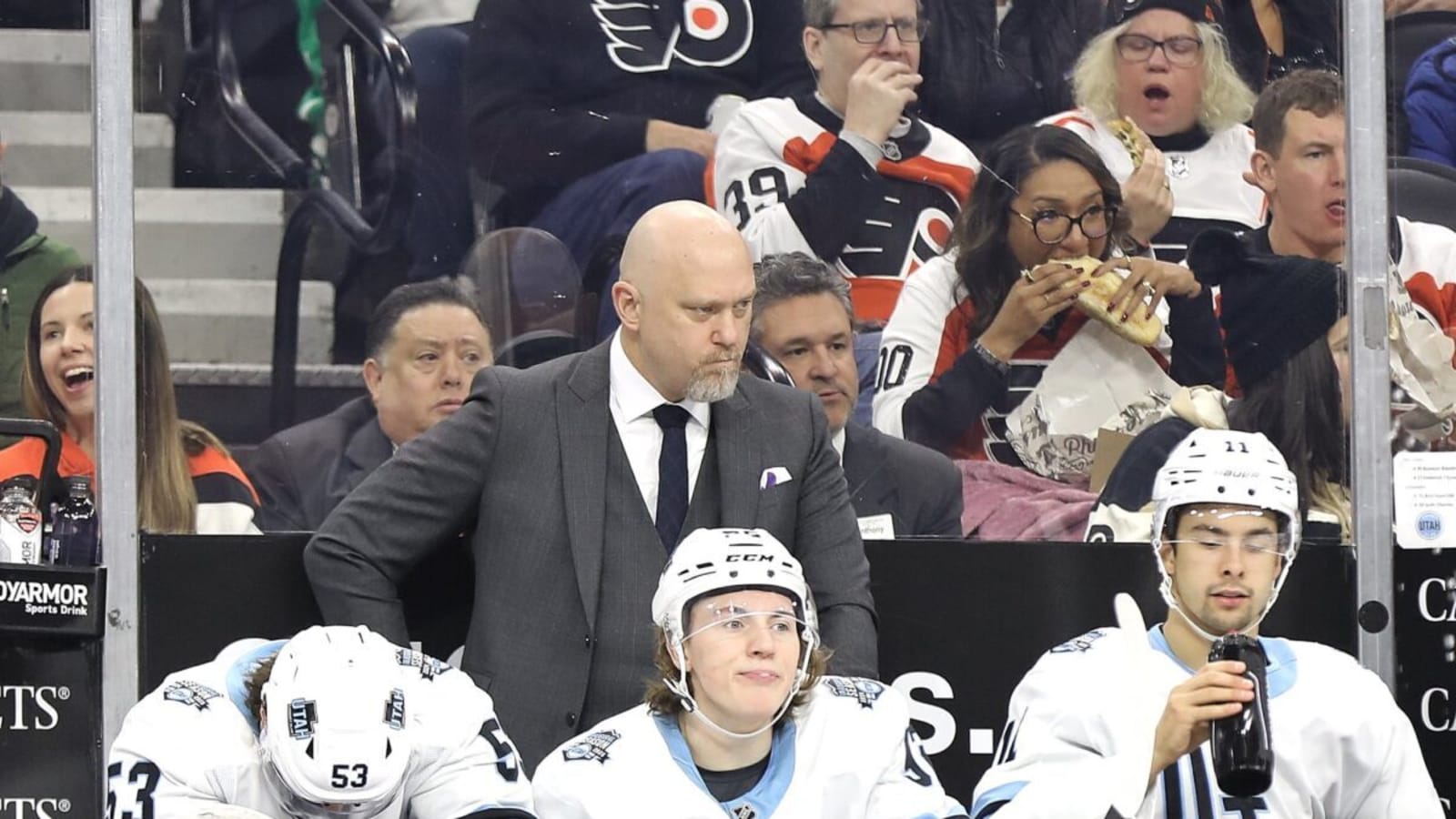
The Utah Hockey Club entered their inaugural season in the NHL with the third-youngest roster. Although this was the club’s first season in Salt Lake City, it was the organization’s fourth season since starting a rebuild as the Arizona Coyotes. While expectations were not overly high before the season, general manager Bill Armstrong said the team is ready to take a step forward thanks to the offseason acquisitions of Mikhail Sergachev and John Marino, as well as the development of their drafted talent, such as Logan Cooley and Dylan Guenther.
With four games remaining in their inaugural season, Utah already has as many wins as the Coyotes did last season and seven more points than they recorded. With Utah taking the big step forward their general manager expected, let’s look back on their growth throughout this season and discuss some of their most significant improvements.
Utah HC’s Turbulent Start to Their Inaugural Season
While Utah got off to a red-hot start in October, winning their first three games of the season, their first 53 games were full of violent swings where Utah looked like one of the best teams in the NHL and, at other times, one of the worst.
Over this stretch, Utah went 22-22-9 and sat 22nd in the NHL through 53 games. Throughout this timeframe, Utah had multiple rough stretches where they lost six of seven games, including a four-game losing streak, 10 in 12 games, and another five-game losing streak.
However, amid all these rough patches, Utah got scorching hot multiple times, having two different three-game win streaks and a stretch of games where they won six of seven.
On some level, inconsistent results should have been expected from a roster as young as Utah’s, especially when you factor in the injuries this team had to deal with. However, the most encouraging part of this season was when Utah found consistency when the intensity started to ramp up around the NHL’s trade deadline. Since Feb. 4, Utah has a 15-8-3 record, the 10th-best record in the NHL since that date.
What Has Led to Utah’s Late-Season Improvement
Utah’s most significant season-long improvement has to be their play at 5-on-5. In the 2023-24 season as the Coyotes, this team ranked among the bottom 10 teams in the NHL in shot attempt, scoring chance, high-danger chance, and expected goal percentage.
Although Utah struggled through more than the first half of the season, their 5-on-5 numbers were still much improved from past seasons. Through their first 53 games, Utah ranked sixth in shot attempt percentage, 10th in shots percentage, sixth in scoring chance percentage, and 11th in high-danger chance percentage. However, their offensive production was still inconsistent, ranking 18th in goal percentage despite having the seventh-best expected goal percentage in the NHL.
Although these numbers were impressive through Utah’s first 53 games, they continued to improve in the latter half of the season. Since Feb. 4, Utah has ranked in the top five in shot attempts, shots, and scoring chance percentage. It has led the NHL in high-danger chance percentage at 5-on-5 over this stretch, which was the most significant improvement from their first 53 games compared to the last two months, where they have seen much more consistent offensive results, ranking 10th in the NHL goal percentage at 5-on-5.
Utah’s Power Play Learned How to Create Quality Scoring Chances
I was critical of Utah’s special teams performance earlier in the season. At the beginning of the season, they took far too many penalties and did not have the power play to dig them out of the holes their lack of discipline was creating.
However, as the season wore on, this changed drastically. Through Utah’s first 53 games, they ranked 31st, only creating 16.64 high-danger chances per 60 minutes on the power play, which was a massive reason why they also ranked 31st in expected goals per 60 minutes over this stretch on the man advantage.
Since Feb. 4, this team has found consistency in its power play, which has been creating 23.87 high-danger chances per 60 minutes, ranking 14th in the NHL. This improvement in creating high-danger chances also translated to Utah having the 10th most expected goals per 60 minutes on the power play over this stretch.
Ultimately, Utah’s most considerable improvement throughout the season was their ability to learn how to create more consistent offensive chances, which translated to much more consistent offensive production. This improvement can be seen by Utah being shut out five times before the end of November but only once throughout the remainder of the season. If this level of play from February on carries over into Utah’s second season in Salt Lake City, with another year of development for their young core and likely more offseason additions, other teams should be fearing what Utah is going to look like next season.
Stats via Natural Stat Trick
More must-reads:
- Other golfers could learn from admirable Tommy Fleetwood
- Dolphins prove how 'soft' they are amid reported cheap shots by Bears
- The 'NFL single-season reception leaders' quiz
Breaking News
Trending News
Customize Your Newsletter
 +
+
Get the latest news and rumors, customized to your favorite sports and teams. Emailed daily. Always free!








